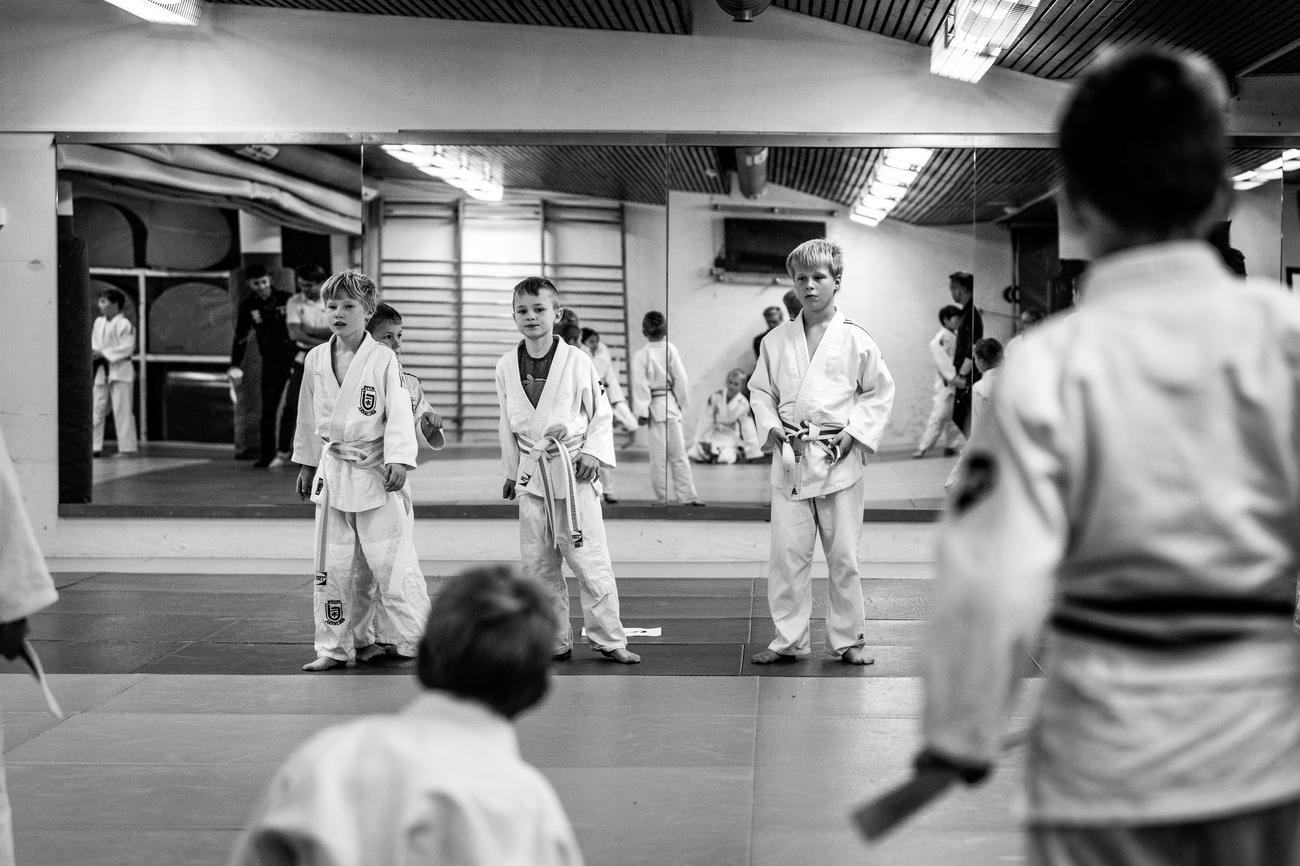In the realm of martial arts, few disciplines hold such rich historical and cultural significance as taekwondo. For centuries, this Korean martial art has captivated the minds and bodies of practitioners, showcasing the power and finesse it possesses. Today, we delve into the ancient birth of taekwondo, unraveling its roots and unearthing its profound legacy in the realm of martial arts. Join us on this enlightening journey as we unveil the tale of how taekwondo came to be, shedding light on its Korean heritage and profound impact on the world of combat sports. Prepare to be immersed in a captivating exploration of the birth of taekwondo.

The Birth of Taekwondo: Unveiling Its Korean Heritage and Martial Arts Legacy
Birth of Taekwondo
When we delve into the birth of Taekwondo, we uncover a fascinating journey that intertwines with Korea’s rich cultural heritage and the evolution of martial arts. Taekwondo, which translates to “kicking,” “punching,” and “the art or way of,” is a Korean martial art known for its dynamic kicks, precise punches, and intricate forms. But how did this martial art come into existence?
The story begins with the three rival Korean Kingdoms of Goguryeo, Silla, and Baekje, where the oldest Korean martial arts were developed. These early martial arts, including ssireum, subak, and taekkyon, served as the foundation from which Taekwondo emerged. They were practiced during a time when combat skills were crucial for self-defense and warfare.
Cultural Significance
Taekwondo holds tremendous cultural significance as a reflection of Korea’s history and values. The emphasis on head-height kicks, jumping and spinning kicks, and fast kicking techniques distinguish Taekwondo from other martial art forms. The practitioners, clad in the traditional dobok, showcase their mastery of these techniques and their adherence to discipline and respect.
Moreover, Taekwondo forms or patterns play a vital role in the practice. These forms, known as “poomsae” in Korean, are choreographed movements that simulate self-defense scenarios. Through poomsae, practitioners develop their balance, timing, flexibility, and overall martial arts skills.
Evolution and Styles
Over time, different styles and organizations have emerged within Taekwondo. Each style encompasses its unique philosophy, teaching methods, and technical variations. These differences bring variety and depth to the practice while keeping the essence of Taekwondo intact.
However, it is important to note that Taekwondo ranks vary among different styles and organizations, and a standardized ranking system is yet to be established. This allows practitioners to find the style that resonates with their goals and aspirations, fostering a sense of individuality while maintaining the overarching principles of Taekwondo.
Historical Influences and Development
The early influences of Taekwondo can be traced back to the Korean Kingdoms, where martial arts like ssireum, subak, and taekkyon found their roots. However, during the late Joseon period, martial arts in Korea faced a decline. Despite this setback, they persisted as a folk game and formal military martial art.
It was after World War II and the Japanese occupation that a new chapter began for Taekwondo. Kwans, or new martial arts schools, opened in Seoul, providing an opportunity to merge various martial arts influences. The founders of these kwans were exposed to Japanese and Chinese martial arts, as well as the indigenous Korean martial art of taekkyon.
Traditionalism vs. Revisionism
One interesting aspect of Taekwondo’s history is the ongoing debate between traditionalism and revisionism. Traditionalists argue for preserving the ancient techniques, forms, and philosophies, while revisionists advocate for adapting to the changing times and incorporating modern elements.
This spirited discourse brings forth remarkable philosophical discussions within the Taekwondo community, ensuring that the art continues to evolve while respecting its historical roots.
A Turning Point: Introduction to the Army
Taekwondo’s path took a significant turn when South Korean president Syngman Rhee witnessed a martial arts demonstration and urged the introduction of martial arts to the army under a single system. This led to the adoption of the term “Tang Soo Do” for Korean karate before eventually settling on the name “Tae Kwon Do,” as advocated by Choi Hong-hi, one of the founders.
The Unification Effort
In an endeavor to streamline and unify Korean martial arts, the Korea Taekwondo Association (KTA) was established. The KTA aimed to create consistency and a standardized approach to Taekwondo, fostering cooperation among different styles and organizations. The establishment of the KTA was a pivotal moment that further solidified Taekwondo’s identity and laid the groundwork for its growth worldwide.
The International Taekwon-Do Federation (ITF)
Choi Hong-hi, wishing to promote his Chan Hon-style of Taekwondo, broke away from the KTA in 1966 and formed the International Taekwon-Do Federation (ITF). The ITF continued to function independently even after South Korea withdrew its support. Choi’s dedication to developing the ITF-style led to significant milestones, including the publication of his renowned “Encyclopedia of Taekwon-Do.”
Conclusion
The birth of Taekwondo is a testament to the indomitable spirit of the Korean people and their dedication to preserving their martial arts heritage. It is an art form that intertwines ancient traditions with modern philosophies, combining grace, strength, and discipline.
Through the centuries, Taekwondo has evolved, embracing various influences, and yet remains deeply rooted in Korean culture. Its journey from the Korean Kingdoms to worldwide recognition showcases the enduring legacy of martial arts and the unwavering commitment of practitioners throughout history.
As we continue to explore the birth of Taekwondo and its profound impact, we are reminded of its vibrancy, diversity, and the immense potential it holds for future generations.
“The birth of Taekwondo embodies the essence of Korea’s martial arts legacy, blending tradition with innovation, empowering individuals through discipline, and leaving an indelible mark on the global stage.”
Taekwondo, a renowned martial art form, has a fascinating history that dates back many years. Have you ever wondered, “When was Taekwondo invented?” Well, let me satisfy your curiosity. Taekwondo was developed in Korea during the 1940s and 1950s, primarily by combining elements of several martial arts styles. Its creation was influenced by the ancient Korean martial arts known as Taekkyeon and Subak, as well as Japanese karate. If you want to delve deeper into the origins of Taekwondo and explore its fascinating journey, click here to discover more: When Was Taekwondo Invented. Get ready to be fascinated by the rich history behind this powerful martial art!

FAQ
Q: What is the literal translation of taekwondo?
A: The literal translation of taekwondo is “kicking,” “punching,” and “the art or way of.”
Q: Does taekwondo involve the use of weapons?
A: Yes, taekwondo sometimes involves the use of weapons.
Q: What is the uniform worn by taekwondo practitioners called?
A: Taekwondo practitioners wear a uniform called a dobok.
Q: What are taekwondo forms or patterns?
A: Taekwondo forms or patterns are an important aspect of the practice, which involves a predetermined sequence of movements.
Q: What are the characteristic techniques of taekwondo?
A: Taekwondo is characterized by its emphasis on head-height kicks, jumping and spinning kicks, and fast kicking techniques.
“`json
“`
- Mastering Leader in Spanish: The Complete Guide - April 19, 2025
- Uncovering Surprising Parallels: England Size Compared to US States - April 19, 2025
- Old Mexico Map: Border Shifts 1821-1857 - April 19, 2025
















